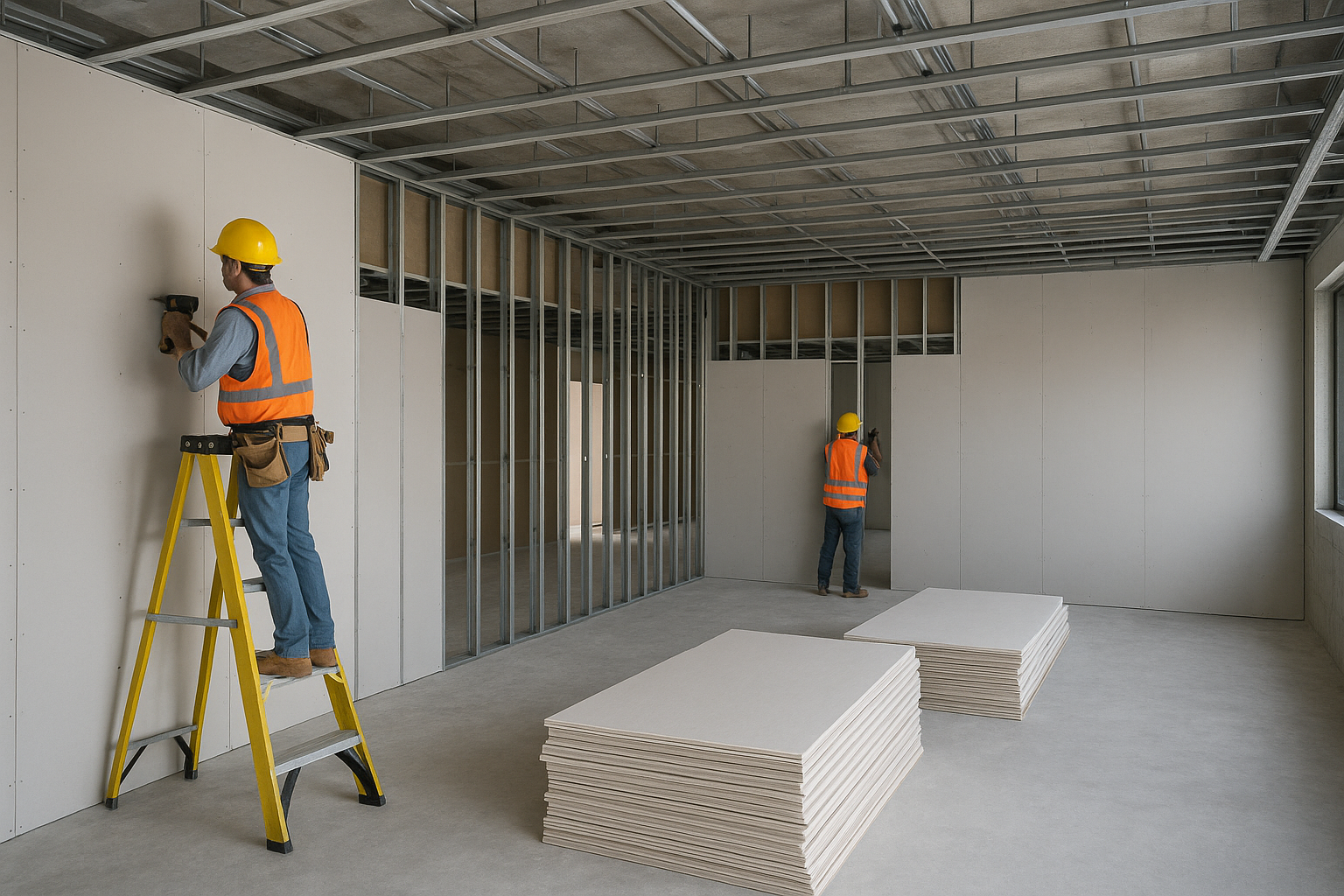
Non-standard wall assemblies—such as staggered stud partitions, shaft walls, or fire-resistive acoustic hybrids—are becoming increasingly common in commercial construction. While these assemblies are often specified for performance, their irregular framing and material combinations pose unique challenges for accurate estimating. Architects, engineers, and general contractors need more than just linear feet and board counts to understand how these configurations affect takeoffs, cost allocation, and production planning.
Any wall configuration that deviates from single-stud, single-layer gypsum assemblies typically falls into the non-standard category. These may include:
Each of these configurations can impact material takeoff quantities, labor sequencing, and installation logistics—making accurate and flexible estimation essential.
Estimators face several challenges when dealing with complex wall systems:
When these factors are overlooked, cost estimates become unreliable and risk-laden—especially if copied from historical templates without verification.
To ensure accuracy, teams must adopt a layered and dynamic approach. Here’s how:
Visual data plays a vital role when dealing with complex assemblies. Platforms that provide 3D visualization or layered color-coded markup allow estimators to validate assumptions visually before submitting bids. For instance, Active Estimating enables real-time visual overlays to confirm assembly types and material layering with accuracy, saving hours in rework.
Manual takeoff processes for these walls are time-consuming and error-prone. A modern drywall estimating software platform should support customizable assembly templates, quantity multipliers based on wall types, and integration with model data for accurate live updates. This ensures that each layer and material component is reflected in the final cost with traceability.
Estimating non-standard wall assemblies isn't just about applying a multiplier—it’s about understanding constructability, coordination, and performance criteria. Teams that capture both objective model data and subjective field considerations will be best positioned to reduce risk and deliver accurate pricing. With tools like Active Estimating, project teams can handle even the most complex drywall assemblies with clarity and confidence.
Schedule a personalized demo to see how Active Estimating can work for your specific needs.
